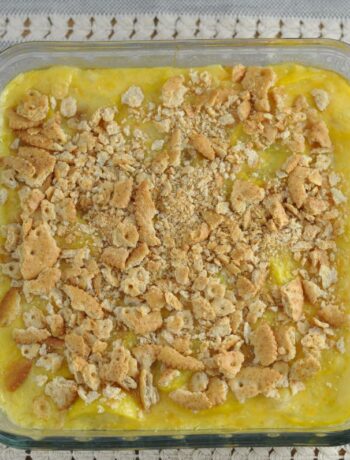Types of Pasta
Pasta, the versatile staple of Italian cuisine, comes in a multitude of shapes, sizes, and textures. From the classic spaghetti to the whimsical farfalle, each type offers a unique culinary experience.
In this comprehensive guide, we’ll delve into 52 types of pasta, explore cooking techniques, share mouthwatering recipes, and answer common FAQs to enhance your pasta prowess.
See our Cooking Resources page for helpful tips on How Many Tablespoons are in a Cup article. Or satisfy your culinary curiosity with How Many Ounces are In a Cup.
We are an Amazon affiliate and there are affiliate links within the article. See our affiliate policy for details.
Jump to Section
- 52 Types of Pasta
- Groups of Pasta by Shape
- Why Try New Pasta Types?
- How to Cook Pasta Properly
- How to Store Pasta
- Where to Buy Pasta
- Benefits of Specialty Pasta
- Types of Specialty Pasta
- Nutritional Value and Vitamins in Specialty Pasta
- Incorporating Specialty Pasta into Your Diet
- FAQs for Types of Pasta
- Recipes for Pasta Sauces
- Guides
- Conclusion
Types of Pasta
Here’s a list of 52 types of pasta along with their descriptions, whether they’re commonly found dry or fresh, and their typical uses:
- Spaghetti: Long, thin strands of pasta. Usually dry. Ideal for twirling with fork or spoon, pairs well with tomato-based or creamy sauces. Classic Spaghetti and Meatballs recipe to try.
- Linguine: Similar to spaghetti but slightly wider. Dry. Great with seafood or pesto sauces.
- Fettuccine: Wide, flat noodles. Dry. Perfect for creamy sauces like Alfredo or carbonara.
- Tagliatelle: Ribbon-like pasta, wider than fettuccine. Dry. Ideal for rich meat or mushroom sauces. Creamy Mushrooms Pasta (30 Minutes)
- Penne: Short, tube-shaped pasta with angled ends. Dry. Excellent for holding chunky sauces or in pasta salads.
- Rigatoni: Short, wide tubes with ridges. Dry. Holds hearty sauces well, great for baked dishes.
- Farfalle (Bowtie): Butterfly-shaped pasta. Dry. Perfect for light sauces, salads, or with creamy sauces.
- Conchiglie (Shells): Shell-shaped pasta. Dry. Great for catching sauces, ideal in pasta bakes.
- Rotini: Spiral-shaped pasta. Dry. Versatile, holds sauces and ingredients effectively, perfect for salads. See our recipe for Easy Pasta Salad With Italian Dressing to try out rotini pasta!
- Fusilli: Corkscrew-shaped pasta. Dry. Excellent for holding chunky sauces, great in pasta salads.
- Orecchiette: Ear-shaped pasta. Dry. Ideal for holding thick sauces or with vegetables. Creamy Pasta Alla Norcina With Easy Homemade Sausage
- Cavatappi: Corkscrew-shaped pasta with ridges. Dry. Great for creamy sauces or baked dishes.
- Orzo: Small, rice-shaped pasta. Dry. Perfect for soups, salads, or pilafs.
- Angel Hair: Very thin, delicate pasta. Dry. Best with light, delicate sauces or in soups. Try Chicken Rotel Spaghetti.
- Pappardelle: Wide, flat ribbons of pasta. Dry. Ideal for rich, hearty sauces or ragù. Creamy Mushroom Pappardelle
- Capellini: Very thin spaghetti, also known as angel hair. Dry. Best with light sauces or in broth-based soups.
- Ravioli: Square-shaped pasta stuffed with various fillings. Fresh or dry. Serve with butter or tomato-based sauces.
- Tortellini: Ring-shaped pasta filled with meat, cheese, or vegetables. Fresh or dry. Serve in broth or with creamy sauces. Greek-Style Beef And Cheese Tortellini Skillet
- Cannelloni: Large, tube-shaped pasta. Dry. Ideal for stuffing with meat or cheese and baking.
- Manicotti: Large, tube-shaped pasta, similar to cannelloni. Dry. Great for stuffing and baking.
- Ziti: Medium-sized tube-shaped pasta. Dry. Perfect for baked dishes or in casseroles.
- Gnocchi: Small dumplings made from potato, flour, or semolina. Fresh or dry. Serve with sauces or in soups.
- Campanelle: Bell-shaped pasta with ruffled edges. Dry. Holds creamy sauces well, perfect for baked dishes.
- Ditalini: Small, tube-shaped pasta. Dry. Ideal for soups or in pasta salads.
- Gemelli: Twisted pasta resembling two strands of spaghetti twisted together. Dry. Versatile, works well with various sauces. Gemelli Pasta with Herbed Ricotta & Cherry Tomatoes
- Strozzapreti: Hand-rolled pasta, similar to cavatelli. Dry. Great with thick sauces or in pasta salads.
- Radiatori: Ridged pasta resembling radiators. Dry. Captures sauces well, perfect for hearty dishes.
- Papardelle: Wide, flat ribbon-like pasta. Fresh or dry. Ideal for hearty meat sauces or creamy sauces. Creamy Mushroom Pappardelle
- Casarecce: Short, twisted pasta. Dry. Captures sauces effectively, perfect for creamy or chunky sauces.
- Mezzelune: Half-moon shaped pasta, usually stuffed with cheese or meat. Fresh or dry. Serve with butter or cream sauces.
- Garganelli: Rolled pasta resembling penne but with ridges. Fresh or dry. Excellent with meat or tomato-based sauces.
- Mafaldine: Long, ribbon-like pasta with ruffled edges. Dry. Holds thick sauces well, perfect for baked dishes.
- Trofie: Short, thin pasta twisted into spirals. Dry. Traditional in Ligurian cuisine, ideal with pesto sauce.
- Agnolotti: Stuffed pasta similar to ravioli, often with meat or cheese filling. Fresh or dry. Serve with butter or light sauces.
- Cavatelli: Small pasta shells, often ridged. Fresh or dry. Great with chunky vegetable or meat sauces. Creamy Pesto Pasta with Fava Beans
- Stelline: Tiny star-shaped pasta. Dry. Perfect for soups, especially for children.
- Fregola: Small, spherical pasta similar to couscous. Dry. Ideal for salads, soups, or pilafs. Sardinian Fregola with Chickpeas
- Lumache: Large, snail-shaped pasta. Dry. Perfect for holding chunky sauces or in baked dishes.
- Trenette: Flat, ribbon-like pasta. Dry. Traditional in Ligurian cuisine, ideal with pesto sauce.
- Maltagliati: Irregularly shaped pasta. Fresh or dry. Versatile, can be used in soups or with sauces.
- Tripoline: Long, ribbon-like pasta. Dry. Great with creamy or seafood sauces.
- Anelli: Small, ring-shaped pasta. Dry. Perfect for soups or in pasta salads.
- Strozzapreti: Hand-rolled pasta resembling cavatelli but longer. Fresh or dry. Ideal with meat or vegetable sauces.
- Maltagliati: Flat, irregularly shaped pasta. Fresh or dry. Versatile, can be used in soups or with sauces.
- Vermicelli: Very thin, long strands of pasta. Dry. Ideal for light sauces or in soups.
- Paccheri: Large, tube-shaped pasta. Dry. Excellent for stuffing or with chunky sauces.
- Malloreddus: Small, ridged pasta resembling gnocchi. Dry. Traditional in Sardinian cuisine, ideal with meat sauces.
- Pici: Thick, hand-rolled pasta resembling spaghetti. Fresh or dry. Great with rich, meaty sauces.
- Lumache: Large, snail-shaped pasta. Dry. Perfect for holding chunky sauces or in baked dishes.
- Creste di Gallo: Ridged, curved pasta resembling rooster combs. Dry. Ideal for capturing creamy sauces or in salads.
- Sorprese: Small, shell-shaped pasta filled with cheese or meat. Fresh or dry. Serve with light sauces or in broth.
- Trottole: Spiral-shaped pasta resembling spinning tops. Dry. Versatile, works well with various sauces or in pasta salads.
Looking for a Pasta Chart? Check out this Pasta Poster on Amazon. It is a great reference to use as kitchen artwork with a purpose!
Types of Pasta: Groups of Pasta by Shape
- Long Pasta: Includes spaghetti, linguine, and fettuccine, ideal for twirling with fork or spoon.
- Short Pasta: Encompasses penne, rigatoni, and farfalle, perfect for capturing chunky sauces and ingredients.
- Tubular Pasta: Such as macaroni, ziti, and cannelloni, great for stuffing or baking in casseroles. Try our Goulash {The Best} recipe for a great macaroni dish.
- Specialty Pasta: Unique shapes like orecchiette, cavatappi, and conchiglie, each offering distinct textural experiences.

With this extensive list, you can now explore the wide world of pasta and enjoy a different culinary experience with each type and shape!
Types of Pasta: Why Try New Pasta Types?
- Diverse Flavors: Different pasta shapes hold sauces and ingredients differently, offering a varied taste experience with each type.
- Texture Exploration: From smooth to ridged, each pasta shape contributes to the dish’s texture, enhancing the overall dining experience.
- Creative Cooking: Trying new pasta shapes sparks culinary creativity, encouraging experimentation with flavors and ingredients.
- Cultural Appreciation: Exploring various pasta types allows you to appreciate the rich culinary heritage of different regions in Italy and beyond.
How to Cook Pasta Properly:
- Boiling Water: Use a large pot of salted boiling water to prevent pasta from sticking together and to enhance its flavor.
- Al Dente: Cook pasta until it’s “al dente,” meaning it’s firm to the bite. This ensures the pasta retains its texture and doesn’t become mushy.
- Stirring: Stir pasta occasionally during cooking to prevent clumping.
- Reserve Pasta Water: Before draining cooked pasta, reserve some pasta water. It can be used to adjust the consistency of sauces.
- Shock Treatment: After draining, shock pasta with cold water to stop the cooking process, especially if you’re using it in salads or cold dishes.
How to Store Pasta:
- Dry Pasta: Store in a cool, dry place in an airtight container to prevent moisture absorption.
- Fresh Pasta: Keep refrigerated and use within a few days, or freeze for longer storage.
- Cooked Pasta: Store in the refrigerator for up to three days, or freeze for future use. See our “How Long is Food Good For in the Fridge” post for more information on storing food in the refrigerator.
Types of Pasta: Where to Buy Pasta:
- Local Grocery Stores: Most supermarkets offer a variety of pasta types, both dry and fresh.
- Specialty Stores: Explore specialty Italian markets or gourmet food stores for a wider selection of pasta varieties.
- Online Retailers: Many online platforms offer a diverse range of pasta types, including artisanal and imported options.
Types of Pasta: Benefits of Specialty Pasta:
From high-protein to gluten-free, keto-friendly to vegan, there’s a pasta variety to suit every palate and nutritional requirement. In this comprehensive guide, we’ll delve into the diverse world of specialty pasta, exploring its benefits, types, and nutritional value across a spectrum of specialty diets. Looking to sample specialty types of pasta? Check out these from Amazon or search for other types of pasta while you are there:
- Diverse Nutritional Profiles: Specialty pasta options offer a wide range of nutrients tailored to specific dietary needs, ensuring individuals can enjoy their favorite comfort food without compromising on nutrition.
- Versatility: Whether you’re following a high-protein regimen, cutting carbs, or avoiding gluten, specialty pasta provides versatile options for crafting delicious and satisfying meals.
- Increased Dietary Adherence: By catering to specialized diets, specialty pasta encourages adherence to dietary restrictions, promoting overall health and well-being.
Types of Pasta: Specialty Pasta
- High-Protein Pasta: Made from ingredients like chickpeas, lentils, or quinoa, high-protein pasta provides an excellent source of plant-based protein, ideal for muscle recovery and satiety.
- Gluten-Free Pasta: Crafted from alternative flours such as rice, corn, or quinoa, gluten-free pasta offers a safe and delicious option for individuals with gluten sensitivities or celiac disease.
- Keto-Friendly Pasta: Typically made from ingredients like konjac flour or shirataki noodles, keto pasta boasts minimal carbohydrates, making it suitable for those following a ketogenic diet.
- Vegan Pasta: Formulated without any animal-derived ingredients, vegan pasta options include varieties made from whole wheat, legumes, or vegetables, offering a cruelty-free alternative for plant-based eaters.
- Sugar-Free Pasta: Ideal for those monitoring their sugar intake, sugar-free pasta options utilize natural sweeteners or are simply devoid of added sugars, promoting stable blood sugar levels and overall health.
- Low-Carb Pasta: With reduced carbohydrate content compared to traditional pasta, low-carb varieties cater to individuals seeking to manage their carb intake while enjoying a satisfying meal.
- Low-Calorie Pasta: Engineered to be lower in calories through portion control or ingredient substitutions, low-calorie pasta allows for guilt-free indulgence without compromising taste or satisfaction.
Types of Pasta: Nutritional Value and Vitamins in Specialty Pasta
While the nutritional content of specialty pasta varies depending on the ingredients used, many options offer noteworthy health benefits. For instance:
- High-protein pasta provides essential amino acids necessary for muscle repair and growth.
- Gluten-free pasta may be fortified with vitamins and minerals to compensate for nutrients lost during processing.
- Keto-friendly pasta offers a low-carb alternative that supports ketosis and fat metabolism.
- Vegan pasta options often contain fiber-rich ingredients that promote digestive health and satiety.
- Sugar-free pasta helps regulate blood sugar levels and reduce the risk of insulin resistance.
- Low-carb and low-calorie pasta varieties assist in weight management and calorie control without sacrificing flavor or satisfaction.
Types of Pasta: Incorporating Specialty Pasta into Your Diet
Specialty pasta has transformed the landscape of traditional Italian cuisine, offering a diverse array of options to accommodate various dietary needs and preferences. Whether you’re seeking high-protein fuel, gluten-free alternatives, or keto-friendly indulgences, there’s a pasta variety to suit every taste and nutritional requirement.
By exploring the world of specialty pasta, you can enjoy delicious and satisfying meals while supporting your health and well-being. So why wait? Dive into a bowl of specialty pasta today and savor the flavors of a healthier, happier you.
- Experiment with different types of specialty pasta to discover your favorites and explore new culinary possibilities.
- Pair specialty pasta with nutrient-rich sauces, vegetables, and lean proteins to create balanced and satisfying meals.
- Monitor portion sizes to maintain appropriate calorie intake and ensure dietary adherence.
- Read labels carefully to identify any allergens or ingredients that may not align with your dietary preferences.
- Embrace creativity in the kitchen by incorporating specialty pasta into traditional dishes or experimenting with unique flavor combinations.
FAQs for Types of Pasta:
- Best Pasta for Casseroles: Short pasta shapes like penne or rigatoni work well in casseroles, holding up to hearty sauces and toppings.
- Best Pasta for Salads: Shapes like fusilli or rotini are ideal for salads, as their twists and ridges hold dressings and ingredients effectively.
- Best Pasta for Soup: Small shapes such as ditalini or orzo are perfect for soups, adding texture without overwhelming the broth.

Recipes for Pasta Sauces:
- Red Sauce for Pasta:
- Ingredients: Crushed tomatoes, garlic, onion, olive oil, basil, salt, pepper.
- Method: Sauté garlic and onion in olive oil until fragrant. Add crushed tomatoes, basil, salt, and pepper. Simmer for 20 minutes.
- White Sauce for Pasta:
- Ingredients: Butter, flour, milk, Parmesan cheese, nutmeg, salt, pepper.
- Method: Melt butter, stir in flour, then gradually add milk. Cook until thickened. Stir in Parmesan, nutmeg, salt, and pepper.
- Oil Sauce for Pasta:
- Ingredients: Olive oil, garlic, chili flakes, parsley, lemon zest, salt, pepper.
- Method: Sauté garlic and chili flakes in olive oil until golden. Toss with cooked pasta, parsley, lemon zest, salt, and pepper.
Guides
Looking for more cooking guides to help you? Check out our kitchen guides:
How Many Ounces In A Cup – Dry-Wet-Imperial-Metric
How Many Tablespoons in A Cup?
How Long Is Food Good For in the Fridge?
How to Season a Blackstone Griddle {Beginner’s Guide }
Conclusion
Embark on a culinary journey through the world of pasta, exploring diverse shapes, flavors, and textures. With proper cooking techniques, storage tips, and an array of tantalizing recipes, you’ll elevate your pasta dishes to new heights of deliciousness.
Whether it’s a comforting bowl of spaghetti with red sauce or a refreshing pasta salad with olive oil dressing, there’s a pasta dish to suit every palate and occasion. Buon appetito!






No Comments